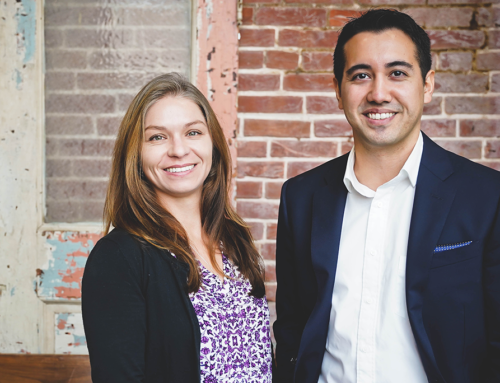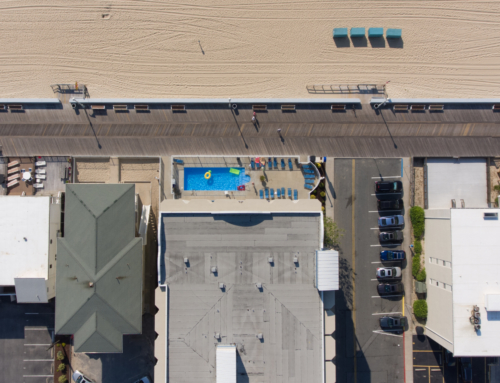
Opening a business may seem like a daunting task, but it doesn’t have to be. Below, I’ve created a roadmap that will help guide you through the process. There is a lot of ground to cover between the inception of your idea and your business’ grand opening – let’s get started!
Step I: Covering the Basics
The first step in creating a business involves outlining your answers to the five Ws—Why, What, Who, Where, and When. You will notice that I’ve chosen to address these questions outside of their traditional order – there’s a reason for that. When you shake up the order, a natural cadence is developed with each response piggybacking on the former. Give it a try!
Why? Why are you starting a business? Why do you want to be a business owner?
Perhaps the most important question to answer – not just for others, but for your own personal benefit. Determining your ‘why’ can be likened to laying your foundation. Much like a house will not withstand the test of time if built on a shaky foundation, your business is not set up with sustainability in mind unless you can accurately and efficiently state why it should exist.
What? What product(s) or service(s) will you offer? What is your preferred client base and will your offerings be tailored to them?
As you develop your business model, you may find that your offerings evolve in response to areas of opportunity that you identify along the way. These opportunities can come in the form of client or community needs, whether they be geographical (like where your business is physically located) or based on availability of products and/or services (say ‘hello’ to everyone’s favorite ‘Economics 101’ concept: supply and demand).
Who? Who is your target audience?
In determining your target client base, you will ideally review the demographics of the population within a geographic proximity of your location. If you are remote, try to concentrate your efforts in areas that contain the demographic characteristics best suited to your products and/or services.
Where? Where will your business be based?
There are many details that factor into determining where your business will be located; identifying and refining those is integral to your success. Before selecting a location, consider whether or not your choice is accessible by your target audience. If yes, great! Now you can move on to practicalities and aesthetics—does the location embody your business culture? Does your business model require specific features like a retail storefront or built-in kitchen? Creating an outline that separates your requirements from your wishlist will save you time down the road when it comes time to acquire or lease commercial space.
When? When do you plan to open?
Once you’ve decided to pull the trigger on your business venture, I recommend that you set a timeline very early on. Hold yourself (and others) accountable! There are a lot of steps between the inception of your idea and the launch of your operation. When setting your timeline goals, allow appropriate time for things like construction, compliance with licensing and regulatory requirements, creation of business and marketing plans, budget creation and consultation with your business professionals, including accountants, financial advisors, attorneys and real estate advisors.
Step II: Creating Your Business Plan
Now that we’ve covered the basics, it’s time to draft a business plan. You may find yourself asking what that means… and that’s okay! A business plan is a formalized outline of the business you are starting which details how it will operate and make money to sustain itself. Eventually, the goal for the business should be to generate enough capital that some can be reinvested in the operation itself; this is how you grow! All of this information will be reflected in your budget and financial projections which will include benchmarking to help you monitor the progress you are making in relation to your documented business goals. If creating your business plan seems daunting, revisit your answers to the five Ws outlined in Step I. Document your answers without focusing too heavily on formatting – formality and grammar can be perfected later on.
A business plan should include an executive summary—a concise explanation of your business. Following the executive summary is an explanation of how the business will make money. Here, you should include your expected monthly and annual income and the expected opening and operating expenses (think marketing budget, your salary, etc). Third, the business plan should include a timeline (revisit Step I: When?). Lastly, your business plan should feature financial statement(s), such as your budget, a Profit and Loss statement and/or a Projected Cash Flow statement. Outlining your financial structure will help to ensure that you remain in alignment with your growth trajectory, particularly if you plan to obtain commercial financing, investors, or apply for loans and grants.
Step III: Financing
It is always strongly encouraged that you engage with your accountant and/or financial advisor to work through the financial requirements and implications of starting a business.
When applying for financing from a commercial lender to purchase a space or finance business expenses, the standard 80/20 rule should apply. What’s this mean? At a minimum, plan to have 20% of any amount you’re requesting from a bank available as a capital investment fund— typically, this portion has to be available in cash. These funds can be used to purchase furniture, fixtures and equipment (FF&E), as a down payment or first month’s rent on commercial space, for pre-opening and opening expense coverage, to fund any required construction, or as a draw account for the first few months of salary and expenses before your business begins generating income.
If you plan to lease space, keep in mind that you will likely need your first month’s rent and security deposit available at the time of lease signing. Remember that you may need changes made to the space to accommodate your business’ needs; you may or may not be able to finance those costs with the Landlord, so plan accordingly.
In addition to the savings that you allocated as initial capital, work towards removing any negative debt from your personal cash flow and credit report in preparation for expected analyses from banks and/or landlords.
Step IV: Selecting a Location
Location, location, location! While it’s fun to imagine the look and feel of your business’ physical location, it’s imperative that you work through the above steps before attempting to secure space. When you are ready, work with a real estate advisor to identify your ideal location using the following questions:
Do you have local competitors? If yes, where are they located? It wouldn’t make much sense to place a flower shop right next door to an existing flower shop, would it? Determine the x-mile radius you would like between your business and similar operations and communicate that with your real estate advisor early on in the search.
Is your business dependent on traffic patterns? Do you need to perform a traffic analysis? For example, if you’re opening a coffee shop, you may want to consider morning traffic routes. Likewise, if your business is reliant on walk-in customers, you may need a space with higher visibility.
Do you need features like a retail storefront or display window? Dedicated parking? Kitchen with exhaust and ventilation? When answering these questions, separate your needs from your wants. Your needs are your requirements – things your business cannot function at its highest potential without. Retrofitting space can be costly and some features may not be able to be added later on. Again, be upfront with your real estate advisor and detail your requirements. And yes, it’s okay to throw a few wishlist items in there as well!
Step V: Marketing for Your Opening
Now that you’ve answered the five Ws, created a business plan, secured financing, and found the perfect location for your business, it’s time to think about marketing. The fun stuff! At this juncture, will need to identify whether a soft or grand opening is more appropriate for your scenario. A soft opening typically allows you to present to a small, pre-determined audience. They can be used to test products and services in a private setting, allowing for informal feedback and time to refine. Conversely, a grand opening opens your business to the public and will likely draw a much larger crowd. This can result in a healthy influx of initial income, but can be stressful for new employees, processes and untested products.
Within your business plan, there should be a budget. You will have created a component within that budget that is dedicated to annual marketing and advertising expenses, of which a portion will be your initial marketing push in preparation for your opening. During this time, you may want to consider working with a marketing consultant, someone who can help you develop a strategy to maximize your marketing budget. Things like business cards, signage, advertising, apparel, social media, content creation and website development will factor into this line item to ensure your community and clientele are aware of your products and/or services.
Once you’ve created your marketing plan, stick to it! It’s important to adhere to your budget, using it as a guide to spend your advertising money efficiently.
Conclusion
Congratulations! You’ve successfully worked through the steps to starting your own business. The work doesn’t stop here, however. Once you’ve worked through the steps, your next goal is to achieve sustainability and prepare for growth. As a business owner, profitability and sustainability are the true benchmarks – more to come on that in the future!
About the Author

Chelsye Phillips-Hutton
Chelsye Phillips-Hutton is a Licensed Real Estate Advisor with NAI Coastal. Backed by more than 15-years of professional experience, Chelsye specializes in business and process development, strategic leadership, and project management in relation to the medical industry.









